Top Automotive PPC Advertising Agency: Expert Auto Repair PPC Marketing
Definition of PPC Advertising
The goal of PPC advertising is to drive traffic to a website and generate leads or sales. This cost-effective and measurable form of advertising allows businesses to reach their target audience at the right time and in the right place. Understanding the definition of PPC advertising is crucial for businesses looking to effectively utilize this powerful marketing tool.
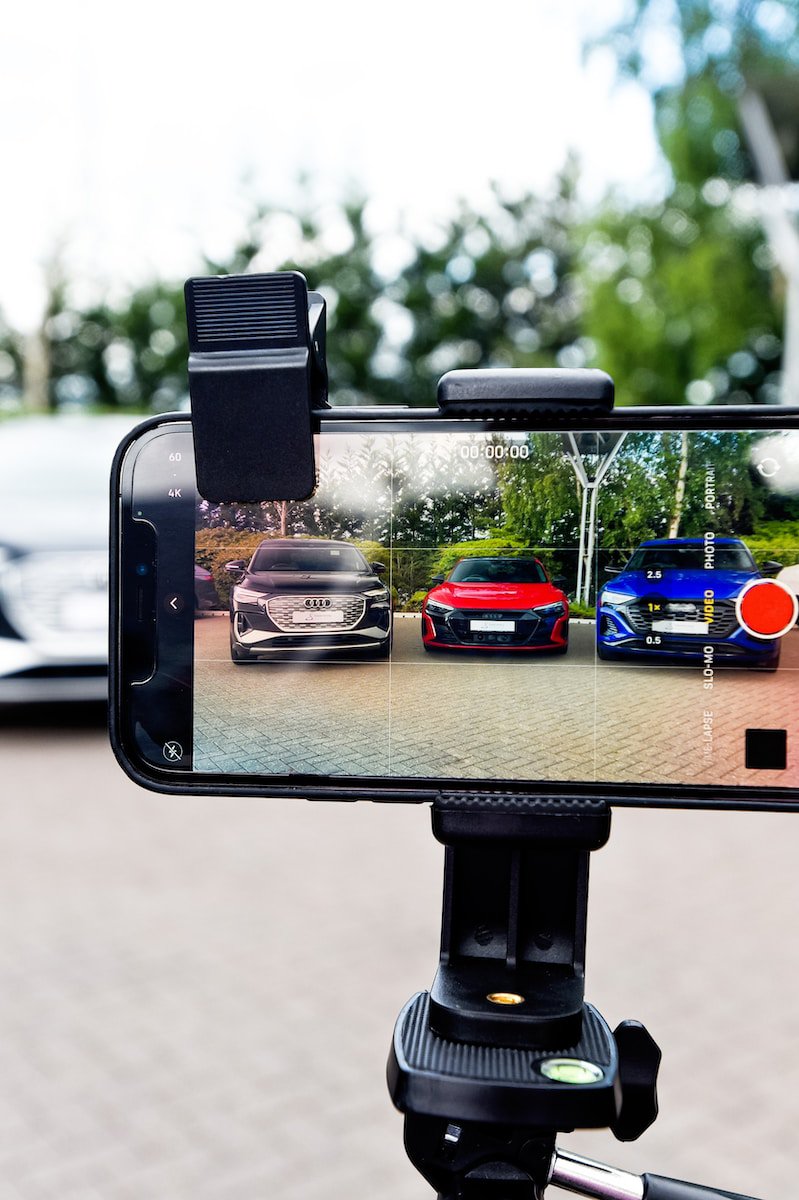
Benefits of Working with a PPC Advertising Agency
By hiring a professional PPC company, businesses can streamline their campaign goals and achieve higher conversion rates. With their knowledge of the latest trends and best practices, these agencies can effectively drive targeted traffic to a website, increasing the likelihood of generating quality leads and sales. Their ability to analyze and interpret data means that they can fine-tune campaigns to reach the most relevant audience, thereby maximizing the return on investment for businesses.
Overall, the benefits of working with a PPC Advertising Agency are numerous, from their specialized knowledge and experience to their ability to drive targeted traffic and achieve campaign goals efficiently. Their expertise can be a game-changer for businesses looking to make the most out of their online advertising efforts.

Understanding Your Goals
By understanding your goals and the reasons behind them, you can create a roadmap for success and take the necessary steps to turn your aspirations into reality. So, let’s dive into the process of understanding your goals and how it can propel you towards a more fulfilling and purposeful life.
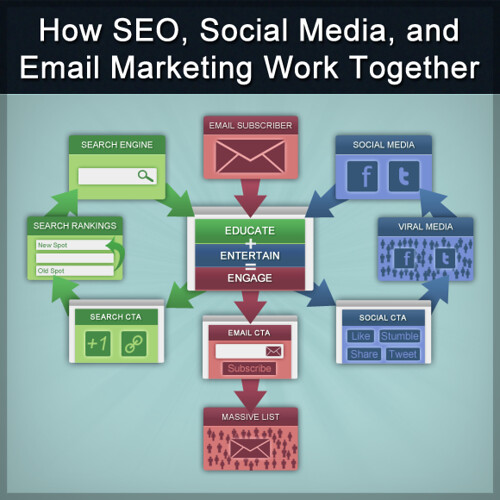
Outlining Your Business Objectives
We have implemented specific PPC strategies, such as targeting high-conversion keywords related to car sales, using compelling ad copy to entice potential buyers, and leveraging retargeting ads to capture leads that have already shown interest in our inventory.
These strategies will be measured for success through metrics such as click-through rates, conversion rates, and cost per acquisition.
By focusing on these objectives and implementing targeted PPC strategies, we aim to increase our overall sales and brand awareness in the highly competitive car dealership industry.
Establishing Your Target Audience
Geographically, the target audience may be located in areas where there is a high demand for automobiles, such as urban or suburban locations with higher income levels. They may also have interests in automotive-related topics or activities, based on their online behavior and engagement with relevant content.
By using audience targeting in Google Ads, automotive businesses can effectively reach their ideal customers and tailor their marketing efforts to appeal to this specific demographic. This ensures that their PPC campaigns are focused on the most relevant audience, leading to higher conversion rates and a more effective use of advertising budget.

Setting an Advertising Budget
In addition, consider the option of running video ads on YouTube to promote your dealership's brand. This can be a highly effective way to reach and engage with potential customers. Be sure to allocate a portion of your budget specifically for creating and running these video ads.
When discussing the budget with potential advertising services providers, be clear about your goals and expectations for the campaign. This will help them provide an accurate estimate of the costs involved. Remember that investing in effective advertising can have a significant impact on the success of your dealership, so it is worth carefully considering and setting a reasonable budget for these services.
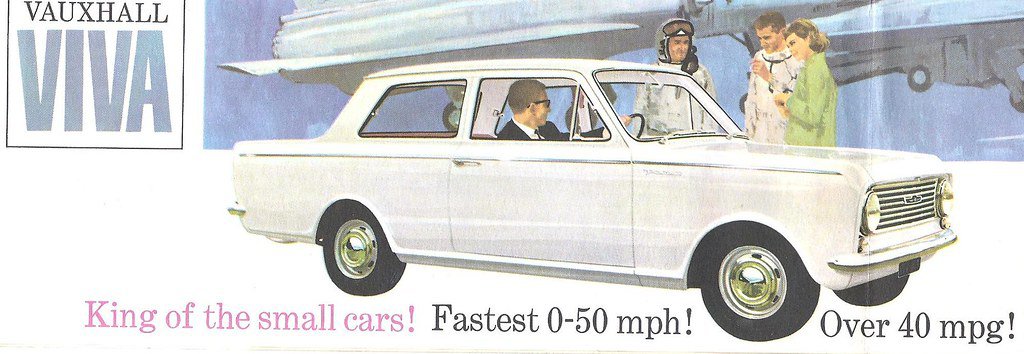
Crafting the Perfect PPC Marketing Campaigns
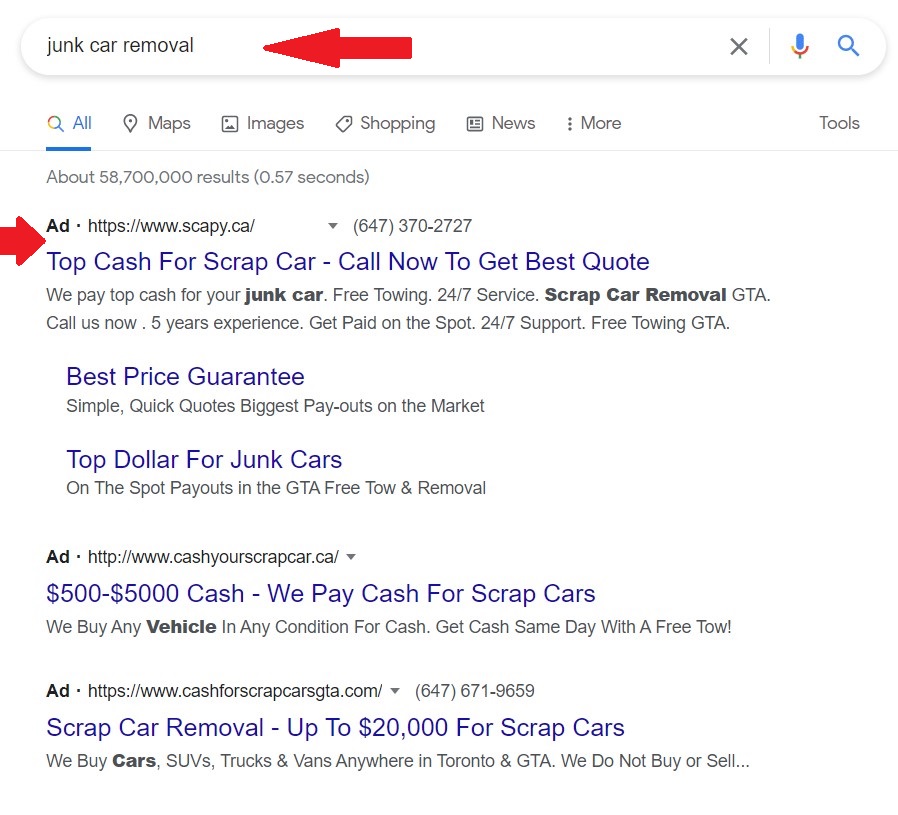
Researching Relevant Keywords & Negative Keywords
Car dealership
Auto sales
New car offers
Used car dealer
Automobile showroom
Vehicle financing
Car trade-in deals
Local car dealerships
Buy new cars
Certified pre-owned vehicles
Car dealer promotions
Auto dealer near me
Online car sales
Luxury car dealership
Family cars for sale
Positive Keywords for Auto Repair Shop:
Auto repair services
Vehicle maintenance
Car repair shop
Auto mechanic services
Engine repair
Brake service
Oil change service
Car diagnostics
Local auto repair
Tire replacement and repair
Transmission repair
Auto repair quote
Automotive maintenance
Full-service auto shop
Roadside assistance
Negative Keywords for Both Auto Dealer and Auto Repair Shop:
Motorcycle repair
Truck rental
Boat dealership
RV servicing
Bicycle repair
Heavy machinery sales
Farm vehicle service
Aircraft maintenance
ATV dealer
Commercial vehicle leasing
By using relevant long-tail keywords such as "best car batteries for extreme cold", "top-rated auto part retailer in [city]", and "discounted branded car batteries", we can target specific customer needs and preferences. Additionally, negative keywords like "wholesale", "used", and "repair services" can help prevent our ads from appearing for irrelevant searches and focus on attracting high-intent consumers looking for retail car parts. This keyword strategy will ensure that our PPC campaign reaches the right audience and maximizes the return on investment for our auto part retailer.
Writing Compelling Ad Copies for Your Ads
Incorporating relevant keywords into your ad copy is essential for reaching the right audience. Conduct keyword research to identify the most relevant and high-performing keywords for your ads and include them strategically in your copy.
Strong calls-to-action are key to driving user action. Use persuasive language to encourage users to take the desired action, whether it's making a purchase, visiting your website, or contacting your dealership.
To craft compelling ad copies, consider conducting competitor research to see what others in the industry are doing, as well as seeking input from the dealership to understand what resonates with customers.
Writing ad copy that entices users to click on your ads and encourages them to take the desired action is vital for the success of your advertising campaigns. By focusing on the unique selling points, promotions, relevant keywords, and strong calls-to-action, you can create ad copies that effectively drive results.
Analyzing Performance & Making Adjustments as Needed
Based on the provided analytics, make bid adjustments to your maximum CPC as needed. If you notice lower conversion rates for clicks from a specific device type or time of day, consider increasing or decreasing the maximum CPC for those segments to optimize the performance of your PPC ads. For example, if you see that clicks from mobile devices have a lower conversion rate, you can reduce the maximum CPC for those clicks to ensure you're not overspending on underperforming traffic.
Making these adjustments to your bid strategy based on the performance metrics will help you ensure that you're getting the most value from your PPC campaigns. Keep testing and refining your bid adjustments to maintain a high-performing PPC strategy that maximizes your return on investment.

Optimizing Conversion Rate & Click-Through Rates (CTR)
Attracting quality leads through PPC and SEM is crucial for maximizing profits. By targeting specific keywords and closely monitoring campaign performance, you can ensure that the traffic driven to your website is more likely to convert into paying customers. Leveraging the statistics provided by PPC and SEM platforms is also important to emphasize the potential for increased profits. Analyzing data on click-through rates, conversions, and return on ad spend can provide valuable insights to refine and optimize campaign strategies for better results.
Ultimately, a strategic approach to PPC and SEM, focusing on relevant and high-performing keywords, and a keen focus on attracting quality leads, will help to optimize conversion rates and click-through rates for better overall campaign performance.
Selecting The Right Tools & Platforms
In this guide, we will explore the key factors to consider when selecting the right tools and platforms for your digital marketing strategy. From understanding your audience to evaluating the features and pricing of different options, we will provide insights to help you make informed decisions. Whether you are a small start-up or an established business, finding the right tools and platforms can make a significant difference in achieving your marketing goals.
Leveraging Google Ads & AdWords to Reach Potential Customers
Understanding the ad auction process and Quality Score is crucial in optimizing ad placements and pricing. Quality Score is based on ad relevance, landing page experience, and expected click-through rate, and can impact ad placement and cost. Understanding these factors can help in optimizing campaigns for better performance and cost efficiency.
Successful ad campaigns that leveraged Google Ads and AdWords include targeted display campaigns by a fitness apparel brand that reached potential customers based on their interests and online behavior, and a local bakery using location targeting to reach potential customers within a certain radius of their store.
In summary, leveraging Google Ads and AdWords involves using targeting options, ad formats, and budgeting considerations effectively, while also understanding the ad auction process and Quality Score for optimal ad placements and pricing.
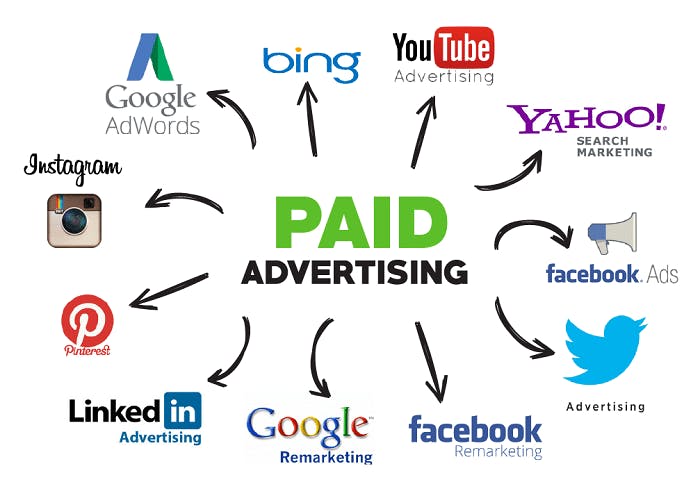
Utilizing Search Engine Marketing Tactics
SEM tactics can include pay-per-click advertising, display advertising, and search engine optimization to ensure that your dealership's website appears at the top of search engine results for relevant automotive searches. This increases brand visibility and drives quality traffic to your website, ultimately leading to an increase in leads and potential sales. Additionally, by targeting potential customers directly through SEM, dealerships can reach a highly interested and engaged audience, resulting in a higher likelihood of converting these individuals into customers. Overall, SEM is a valuable tool in the automotive industry for targeting specific audiences and driving quality visitors to your dealership's website.
Working With The Right Team Of Experts
To effectively reach the target audience in the automotive industry, specific skills and experience required include a strong knowledge of the automotive market, proficiency in digital marketing strategies, and the ability to create engaging content that resonates with car enthusiasts. Successful campaigns also depend on an understanding of different advertising channels, such as social media, search engine marketing, and traditional media like TV and print.
The team should be well-versed in tracking and analyzing data to continuously optimize advertising strategies for better results. Having a thorough understanding of automotive trends and industry insights is crucial to tailor marketing efforts effectively.
Overall, a successful automotive advertising team should have the expertise to develop engaging campaigns that resonate with the target audience while leveraging industry knowledge to drive results.

- What is PPC advertising and how does it work in the automotive industry?
- PPC (Pay-Per-Click) advertising in the automotive industry involves advertisers paying a fee each time their ad is clicked. It's used to drive traffic to websites and generate leads or sales by placing ads in search engine sponsored links for relevant keywords.
- Why should automotive businesses invest in PPC advertising?
- Automotive businesses should invest in PPC advertising because it's a cost-effective way to reach their target audience, increase website traffic, and generate leads. It's measurable and allows for precise targeting.
- What are the key benefits of working with a PPC advertising agency for automotive marketing?
- Working with a PPC agency provides expertise in keyword research, ad creation, and campaign optimization. Agencies bring experience across various campaigns, improving the chances of success and maximizing ROI.
- How does a PPC agency determine the goals and objectives of an automotive campaign?
- A PPC agency works with the business to understand its marketing objectives, such as lead generation, sales, or brand visibility, and tailors the PPC strategy accordingly.
- What are the steps involved in outlining a business's PPC strategy for automotive services?
- Outlining a PPC strategy involves analyzing the business model, determining target audiences, selecting relevant keywords, setting a budget, and defining success metrics.
- How does an automotive PPC campaign establish its target audience?
- The target audience in automotive PPC is established based on demographics, interests, and online behaviors. Factors like age, gender, location, and automotive interests are considered.
- What factors should be considered when setting an advertising budget for automotive PPC campaigns?
- When setting a budget, consider the cost of keywords, competition, campaign goals, and expected ROI. The budget should align with the business's marketing goals and financial constraints.
- What are the essential components of crafting successful PPC campaigns for automotive businesses?
- Successful PPC campaigns involve keyword selection, compelling ad copy, targeting options, and continuous performance monitoring and adjustments.
- How should keywords be researched and selected for automotive PPC campaigns?
- Keyword research involves identifying terms that potential customers are using to search for automotive products or services. Tools like Google Keyword Planner can be used for this purpose.
- What are effective tactics for writing compelling ad copies in automotive PPC?
- Effective ad copies should highlight unique selling points, include relevant keywords, and have strong calls-to-action to drive user engagement and conversions.
- How is the performance of automotive PPC campaigns analyzed and adjusted?
- Performance is analyzed using metrics like click-through rate, conversion rate, and ROI. Adjustments are made based on this data to optimize the campaigns.
- What strategies are used to optimize conversion rates and click-through rates in automotive PPC?
- To optimize these rates, focus on relevant and high-performing keywords, refine targeting, and continuously test and adjust ad copies and landing pages.
- How do you select the right tools and platforms for automotive digital marketing?
- Select tools and platforms based on their features, compatibility with your marketing goals, audience reach, and budget considerations.
- What tactics in search engine marketing are most effective for the automotive industry?
- Effective SEM tactics for the automotive industry include targeting specific keywords, using both organic and paid search strategies, and creating content that resonates with automotive enthusiasts.
- What expertise is required in a team to successfully manage automotive PPC campaigns?
- A team needs expertise in digital marketing, especially in PPC, along with a deep understanding of the automotive industry, consumer behavior, and data analysis skills.
How do other dealerships approach PPC advertising?
When considering how other dealerships approach PPC advertising, it is important to note that there are various strategies implemented. One common approach involves running multiple campaigns that cater to different objectives and target different customer segments. These campaigns may include brand awareness campaigns, lead generation campaigns, remarketing campaigns, and campaigns focusing on specific vehicle models or promotions.
Additionally, other dealerships frequently utilize advanced targeting techniques to reach their desired audience. This may involve targeting specific demographics, geographic locations, or even interests and behaviors of potential car buyers. By tailoring their PPC campaigns to the right audience, dealerships aim to increase their chances of attracting qualified leads and generating conversions.
Moreover, it is common for dealerships to continually optimize their PPC campaigns. This involves monitoring and analyzing data to identify areas for improvement, such as adjusting bidding strategies, refining keyword targeting, or enhancing ad copy and landing pages. By continuously making data-driven modifications, dealerships can strive to enhance the performance and effectiveness of their PPC advertising efforts.
Lastly, it is worth mentioning that many dealerships also leverage retargeting techniques. By utilizing tracking pixels or cookies, they can display targeted ads to users who have previously visited their website or shown interest in their offerings. This approach helps keep their dealership top of mind and encourages potential customers to revisit, engage, and ultimately convert.
Overall, when examining how other dealerships approach PPC advertising, it becomes evident that a multifaceted and strategic approach is often employed. By running various campaigns, employing advanced targeting techniques, optimizing performance, and utilizing retargeting strategies, dealerships aim to maximize the impact and success of their PPC advertising initiatives.
What types of queries should general campaigns be targeting?
General campaigns should target queries that may not be traditional keywords for SEO purposes, but are steadily gaining popularity in searches. These queries include terms like "Best auto dealership near me" and other locally-focused search terms. By dominanting these types of search queries through PPC campaigns, businesses can maximize their campaign results and ensure they appear above their competitors in local search results.
How can timely post-purchase remarketing ads improve customer retention?
Timely post-purchase remarketing ads can significantly improve customer retention by leveraging the opportunity to turn one-time customers into lifetime customers. This form of remarketing focuses on showcasing the additional services and offerings provided by your dealership, such as oil changes, tire rotations, and other maintenance options.
To implement this strategy effectively, you need to sync the customer's email address with a remarketing list. This list will be targeted specifically for post-purchase ads that aim to engage customers with your dealership's add-on services rather than merely promoting the sale of another vehicle.
The key to enhancing customer retention through timely post-purchase remarketing is leveraging the customer's life cycle with your dealership. For instance, if you're aware that a customer's lease is nearing its end, you can start targeting them with relevant ads to warm them up for another purchase. By providing this heads-up before directly reaching out to them, you establish a level of trust and demonstrate your commitment to their automotive needs.
By running these ads in a timely manner, you increase the likelihood of retaining customers and encouraging their return. They are reminded of the added value and convenience your dealership offers, and are more likely to consider utilizing your services for oil changes, tire rotations, and other maintenance needs. Consequently, this ongoing engagement fosters a sense of loyalty and ensures that customers continue to choose your dealership over competitors.
Overall, by leveraging timely post-purchase remarketing ads, you can effectively improve customer retention by turning one-off customers into loyal patrons who view your dealership as their go-to solution for automotive services beyond the initial purchase.
What is post-purchase remarketing and how does it help retain customers?
Post-purchase remarketing is a strategic marketing campaign that aims to retain customers who have already made a purchase by encouraging them to become repeat customers. The goal is to establish a long-term relationship with the customer and ensure that they continue to choose your business for their ongoing needs.
This type of remarketing focuses on promoting additional services or products that complement the customer's initial purchase. For example, if you operate a car dealership, post-purchase remarketing may involve highlighting services such as oil changes, tire rotations, or other maintenance options. By reminding customers of these add-on services, you can increase the likelihood that they will return to your dealership for their ongoing vehicle needs.
To execute a post-purchase remarketing campaign effectively, a customer's email address is usually linked to a remarketing list. This allows you to target them specifically with ads that emphasize the additional services or products your business offers, rather than solely focusing on future purchases.
Timing is crucial in post-purchase remarketing. By monitoring key milestones, such as the end of a lease agreement, you can proactively engage with customers and remind them of the excellent services you provide. By reaching out with relevant ads at the appropriate moment, you can build trust and establish a stronger connection with the customer.
Overall, post-purchase remarketing contributes to customer retention by nurturing the relationship between your business and the customer, ensuring that they continue to choose your brand over competitors. By offering personalized and timely ads that highlight the value of additional services or products, you can create ongoing loyalty and drive repeat business.
What is in-store remarketing and how does it aim to convert customers?
In-store remarketing is a marketing strategy that involves showing targeted advertisements to individuals who have physically visited your dealership, whether it be for browsing or a test drive. The goal of in-store remarketing is to convert these potential customers into actual buyers by establishing trust and enhancing your dealership's authority.
To initiate an in-store remarketing campaign, the first step is to collect the prospective customer's email address. This email address is then added to a remarketing list, allowing you to specifically target these individuals with relevant ads. By showing personalized ads to customers who have already shown interest in your dealership, in-store remarketing aims to capture their attention and influence their purchase decision when they are ready to buy rather than conducting further research.
The types of ads used in in-store remarketing play a crucial role in building trust and authority. Display campaigns can showcase satisfied customers, highlighting their positive experiences with your dealership. YouTube ads, on the other hand, can feature your knowledgeable staff discussing the exceptional qualities and services that your company offers. These strategies aim to create a sense of reliability and credibility in the minds of potential customers, increasing the likelihood of them choosing your dealership over competitors.
Ultimately, in-store remarketing is a targeted approach that leverages the physical visit of a customer to your dealership by presenting them with customized ads. By focusing on individuals who have already shown interest in your products or services, in-store remarketing seeks to convert these prospects into loyal customers through the establishment of trust and authority.
How does site visitor remarketing work?
Site visitor remarketing works by targeting individuals who have previously visited your website and excluding those who have visited specific pages such as the Search Results Page (SRP) and Vehicle Details Page (VDP). This exclusion is done because these pages are already being addressed in dynamic marketing campaigns.
The process of visitor remarketing follows a fairly standard path. When a user visits one of your website pages, excluding SRP and VDP pages, and then leaves your site, they later visit a third-party website. At this point, a remarketing strategy kicks in and displays one of your ads to the user. This ad creates an opportunity for the user to re-engage with your brand and potentially convert, whether that means making a purchase, submitting a form, or performing any other desired action. By leveraging site visitor remarketing, you can effectively target users who have shown previous interest in your website and increase the chances of converting them into customers.
What are remarketing campaigns and how do they target people who have already interacted with a brand?
Remarketing campaigns are a targeted marketing approach that focuses on reaching out to individuals who have previously engaged with a particular brand. These campaigns are designed to reconnect with potential customers who have shown some level of interest but have not yet converted.
There are several subsets of remarketing campaigns that cater to different stages of the customer's journey. The first subset is Site Visitor Remarketing, where ads are displayed to individuals who have visited the brand's website, excluding those who have already viewed specific product or service pages. This is because these pages are typically covered by dynamic marketing campaigns. The process involves a user visiting the website, leaving, then encountering ads on third-party sites to encourage conversion.
Dynamic Remarketing is another subset, which customizes ads based on the specific product or service pages a person visited on the brand's website. This strategy ensures that the ads displayed to individuals are highly relevant and tailored to their interests and intentions.
In-Store Remarketing campaigns target people who have physically visited the brand's physical location, such as a dealership or store. Ads are shown to these individuals to foster trust, build authority, and ultimately convert them into customers. In this case, the ads are specifically aimed at customers who are ready to make a purchase and are looking for an extra push to commit.
Post Purchase Remarketing campaigns focus on turning one-time customers into repeat or loyal customers. These campaigns aim to encourage customers who have already made a purchase to continue engaging with the brand by showcasing additional services or products. This can be achieved by displaying ads for services like maintenance, add-on products, or incentives to return for future purchases. By doing so, the brand aims to establish a long-term relationship with the customer.
Timeliness is an essential factor in post purchase remarketing. By accurately identifying when a customer's lease or relevant timeframe is ending, the brand can strategically run ads to warm them up for another purchase or remind them of available services. This pre-emptive approach helps establish trust and increases the likelihood of repeat business.
In summary, remarketing campaigns involve targeting individuals who have previously interacted with a brand. These campaigns encompass subsets such as Site Visitor Remarketing, Dynamic Remarketing, In-Store Remarketing, and Post Purchase Remarketing, each addressing different stages of the customer journey and offering tailored strategies to reconnect and convert potential customers.
What are the positives and drawbacks of running a conquest campaign?
Running a conquest campaign can have both positive and negative implications. On the positive side, such campaigns allow you to gain an advantage by positioning yourself in front of your competitors. This means that when shoppers are actively searching for your competitors, your brand will also appear, giving you an opportunity to capture their attention and potentially win them over. This heightened visibility can help you stay at the forefront of the searcher's mind, increasing brand awareness and potentially leading to higher conversion rates.
Conversely, there are also some drawbacks to running a conquest campaign. First, the cost-per-click (CPC) for conquest campaigns is often higher compared to other campaigns. This is because the competition for keywords related to your competitors can be fierce, driving up the price for every click. Additionally, the click-through-rate (CTR) may not be as good as when targeting non-competitive keywords, since shoppers searching for your competitors may already have a specific brand or product in mind.
Furthermore, running a conquest campaign might result in a low quality score, as your landing page may not explicitly feature the keywords you are targeting. This can negatively impact your campaign's overall performance and make it difficult to achieve optimal visibility and conversion rates.
In summary, while running an effective conquest campaign can give you a competitive edge, helping you cut in front of your competition and potentially achieve higher conversion rates, it is important to consider the potential drawbacks. These include higher CPCs, lower CTRs due to searching for competitors, and the risk of having a low quality score. Careful planning and optimization are necessary to mitigate these challenges and achieve desired results.
What are the categories of keywords used in competitive brand conquest campaigns?
In competitive brand conquest campaigns, the categories of keywords used can be divided into two main categories: competitive brands and comparative vehicles. The first category involves targeting search queries that specifically mention or relate to competing brands. In these campaigns, the keywords used are similar to those employed in a branded campaign, with one key difference - the brand name of the business is replaced with the name of a competitor. This allows for the targeting of potential customers who are actively searching for or considering the competitor's brand.
The second category, comparative vehicles, focuses on bidding for keywords related to specific makes and models that are comparable to the vehicles offered by the business. This means targeting keywords that are associated with alternative options or similar models to the ones a business provides. By utilizing these comparative keywords, businesses can position themselves as a strong alternative to their competitors, enticing potential customers who may be interested in similar offerings.
In summary, competitive brand conquest campaigns employ two main categories of keywords - competitive brands and comparative vehicles. By strategically utilizing these keywords, businesses can effectively target potential customers who are actively considering and searching for both competing brands and alternative options.
What are conquest campaigns and how do they target competing brands?
Conquest campaigns are a type of advertising strategy designed to target competing brands in search queries. They involve bidding on keywords that are typically used in brand campaigns, but instead of using your own business's name, you replace it with the name of a competitor.
There are two main categories of conquest campaigns: competitive brands and comparative vehicles. When targeting competitive brands, the keywords chosen will closely resemble those used in your own branded campaign, except that you will use your competitor's name instead of your own. This allows you to position your brand in the search results when customers are specifically looking for your competitor.
In the case of comparative vehicles ad groups, you bid on make and model keywords that are directly comparable to the vehicles you offer. For example, if you sell trucks, you might bid on keywords related to your competitors' truck models. This strategy aims to capture the attention of customers who are actively considering options similar to your own products.
By running an effective conquest campaign, you can gain an edge over your competition, increase brand visibility, and potentially achieve higher conversion rates. However, there are a few drawbacks to consider. Conquest campaigns often have a higher cost-per-click because the click-through-rate may not be as strong when people are specifically searching for your competitor. Additionally, your landing page may not feature the exact keywords you are targeting, which could result in a lower quality score.
It is important to note that conquest campaigns should not infringe on a competitor's trademark or use their slogans or catchphrases. This is crucial to stay on the right side of legal boundaries. As long as you adhere to ethical guidelines and industry standards, conquest campaigns can be a common practice in the PPC (pay-per-click) industry.
How can dealerships target specific keywords and ad templates in dynamic campaigns?
In dynamic campaigns, dealerships can effectively target specific keywords and ad templates to optimize their advertising strategy. By utilizing keyword templates, dealerships can focus on both short and long tail keywords, ensuring a comprehensive approach. These templates are standard examples of what a dealership's campaign could encompass, typically divided into three main categories: Make, Make + Model, and Make + Model + Year keywords.
For instance, in a dynamic campaign, long tail keyword examples could include phrases such as "Honda Civic sales" or "used Honda Civic." To narrow down the audience further, dealerships can even incorporate their location or dealership name within the keyword, targeting potential customers in specific areas.
Similarly, ad templates follow a similar concept. Dealerships can create templates for their Make, Make + Model, and Make + Model + Year campaigns, which are then automatically populated with relevant information programmatically. This means that if a dealership has Honda Civic and Ford Focus vehicles in stock, the ad templates for the Make + Model campaign would be dynamically completed with the specific details of these vehicles.
By utilizing keyword templates and ad templates, dealerships are able to precisely target their desired audience and deliver tailored advertisements that align with the specific inventory they have available. This approach allows for a more streamlined and effective advertising strategy in dynamic campaigns.
What are dynamic campaigns and how do they work?
Dynamic campaigns are a distinct type of PPC campaign that involves programmatically creating ads based on the inventory in your feed, in combination with keyword and ad templates that you create. Unlike traditional PPC campaigns, dynamic campaigns automatically generate campaigns, ad groups, and keywords based on various combinations of the Make, Make + Model, and Make + Model + Years of vehicles in your inventory feed.
Here's how dynamic campaigns work: Initially, your inventory feed is analyzed periodically throughout the day. This analysis identifies any changes in your inventory, such as new additions or vehicles that have been sold. If a vehicle, like a BMW, is sold out, the dynamic campaign recognizes this and stops running all BMW-related ads. By doing so, dynamic campaigns ensure that your ad spend is optimized and focused on the vehicles you actually have in stock.
To efficiently handle the wide range of Make, Make + Model, and Make + Model + Year variations, dynamic campaigns rely on templates for keywords and ads. With keyword templates, you can target both short and long tail keywords, providing a comprehensive strategy to reach potential customers. Ad templates work similarly, allowing you to create a template for each category of vehicles, such as Make, Make + Model, and Make + Model + Year. These templates are then programmatically completed based on the vehicles in your inventory feed.
In summary, dynamic campaigns dynamically generate advertisements by utilizing your inventory feed, as well as customizable keyword and ad templates. By constantly analyzing changes in your inventory, dynamic campaigns adjust ad visibility accordingly, saving you money and ensuring your ads are relevant to the vehicles you currently have available.
How can PPC campaigns help dealerships sell more cars?
PPC campaigns can significantly contribute to the success of auto dealerships in selling more cars. In today's digital age, relying solely on word of mouth is no longer sufficient for thriving in the automotive industry. Brick and mortar locations must establish a strong online presence to meet the changing behavior of consumers who are now purchasing products, including vehicles, through different avenues.
According to research conducted by Netpop, a staggering 90% of car buyers turn to Google for a quicker and more efficient research process. The decision-making process has become much shorter, and potential buyers typically visit a dealership only twice before making a purchase. Understanding this information allows dealerships to develop PPC campaigns that strategically target customers at each stage of their research journey, capturing their attention and influencing their buying decisions.
Furthermore, studies conducted by Google reveal that even if a dealership achieves the top organic search ranking, they can miss out on approximately 55% of potential clicks if they do not utilize PPC ads. By incorporating PPC advertising alongside SEO efforts, dealerships have the opportunity to appear above the search results, increasing their visibility and attracting more potential customers.
A well-executed PPC campaign for auto dealerships emphasizes a robust strategy that involves identifying high opportunity keywords, precisely targeting desired audiences, creating compelling ad text, and designing visually appealing landing pages. By aligning these elements, dealerships can effectively reach and engage with their target market, ultimately leading to higher car sales.
In conclusion, PPC campaigns offer dealerships the opportunity to enhance their online presence, engage with potential car buyers during critical micro moments, and capture a larger share of clicks and conversions. By leveraging PPC alongside traditional marketing methods, dealerships can optimize their sales potential and stay ahead in the competitive automotive industry.